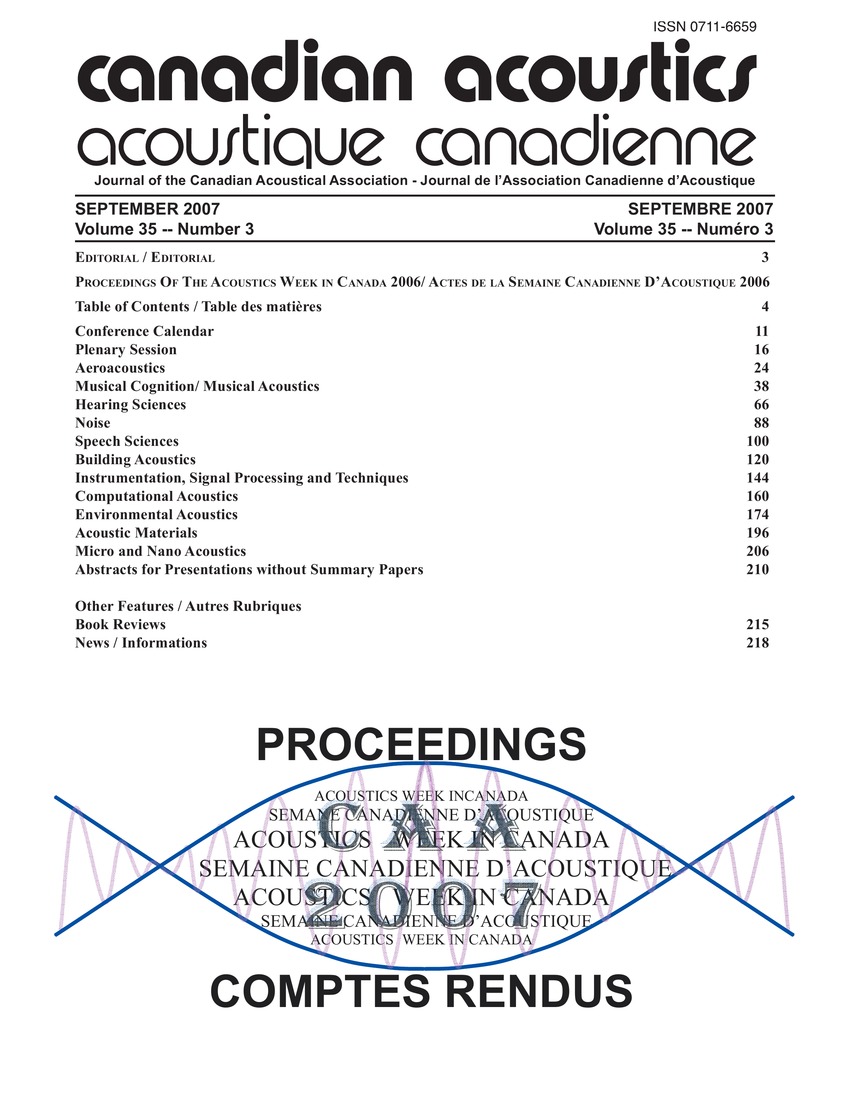Adaptive environmental classification system for hearing aids
Keywords:
Cluster analysis, Feature extraction, Hearing aids, Learning systems, Merging, Adaptive environment, Adaptive learning process, Classification system, Merging environmentAbstract
An adaptive environmental classification system for hearing aids is introduced in which classes can be split and merged based on changes in the environment that the hearing aid is likely to encounter. The classification steps include information that distinguish different types of environments and the classification accuracy depending on the selection of features. The system stores the features in a buffer which is periodically processed to provide a single representative feature vector for the adaptive learning process. The adaptive learning phase begins when user fits the hearing aid and modifies the initial classification system to adapt to the user-specific environments. The general behavior of the adaptive classifier and the process of splitting and merging environment classes is represented by the squares in the center of each cluster represent the class centers.Additional Files
Published
How to Cite
Issue
Section
License
Author Licensing Addendum
This Licensing Addendum ("Addendum") is entered into between the undersigned Author(s) and Canadian Acoustics journal published by the Canadian Acoustical Association (hereinafter referred to as the "Publisher"). The Author(s) and the Publisher agree as follows:
-
Retained Rights: The Author(s) retain(s) the following rights:
- The right to reproduce, distribute, and publicly display the Work on the Author's personal website or the website of the Author's institution.
- The right to use the Work in the Author's teaching activities and presentations.
- The right to include the Work in a compilation for the Author's personal use, not for sale.
-
Grant of License: The Author(s) grant(s) to the Publisher a worldwide exclusive license to publish, reproduce, distribute, and display the Work in Canadian Acoustics and any other formats and media deemed appropriate by the Publisher.
-
Attribution: The Publisher agrees to include proper attribution to the Author(s) in all publications and reproductions of the Work.
-
No Conflict: This Addendum is intended to be in harmony with, and not in conflict with, the terms and conditions of the original agreement entered into between the Author(s) and the Publisher.
-
Copyright Clause: Copyright on articles is held by the Author(s). The corresponding Author has the right to grant on behalf of all Authors and does grant on behalf of all Authors, a worldwide exclusive license to the Publisher and its licensees in perpetuity, in all forms, formats, and media (whether known now or created in the future), including but not limited to the rights to publish, reproduce, distribute, display, store, translate, create adaptations, reprints, include within collections, and create summaries, extracts, and/or abstracts of the Contribution.


